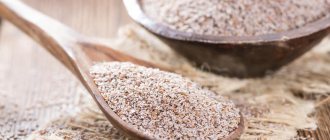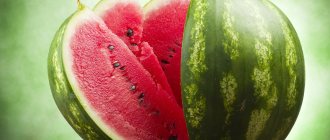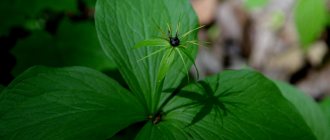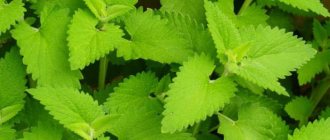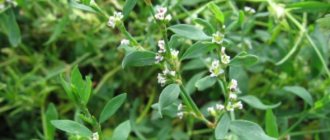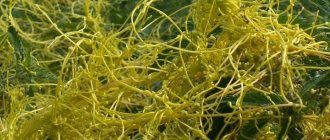Description and where the meadow lumbago flower grows
Meadow lumbago belongs to plants of the Ranunculaceae family. Dream grass grows up to 7-30 cm in height.
In April, the plant produces a pubescent arrow with a sessile linear-dissected bract. At its end there is a large drooping flower. Outwardly, it looks like a bell, the edges of its petals are bent. The flowers reach 1.5-2.5 cm in length and 0.6-1 cm in width. They can be pale lilac, red, black-violet or greenish-yellow in color. During fruiting, the flower stalks lengthen.
The leaves of the meadow lumbago appear during flowering or immediately after it ends. They are pinnately dissected and divided into segments. The leaf segments are narrowly linear, 1-3 mm wide. Their lower part is shaggy-hairy.
The rhizome of meadow lumbago grows vertically and goes deep underground. It can be single- or multi-headed. The roots are colored dark brown.
Meadow lumbago is found in the countries of the Northern Hemisphere located in the temperate zone. You can find the plant in European countries - Denmark, Sweden, Norway, Romania, Germany, Poland, Bulgaria. Sleep grass is also widespread in the European part of Russia and in other post-Soviet countries - Belarus, Lithuania, Ukraine, Estonia, Latvia.
Meadow lumbago grows mainly on the edges of forests and in pine forests. You can also find thickets of sleep grass on dry slopes and sandy hills.
The stem of the meadow lumbago is erect, the whole plant is densely covered with a layer of whitish hairs
Growing and care
Conditions for sleep grass
Shoots are quite difficult to grow.
Different varieties and species of this plant are accustomed to incredibly different living conditions, but at the same time retain the ability to perfectly adapt to their changes.
Absolutely all shoots have a common minimum requirement for growing conditions, which should not be violated under any circumstances.
The lumbago will develop only under conditions of good lighting, but not the brightest, but in moderation. Light shading, as well as unstable partial shade or just a sunny area, are equally suitable for the growth of garden lumbago, but usually the most effective rosettes of leaves, as well as the largest flowers, are produced in light shading, which imitates mountainous areas and pine forests.
Absolutely all, without any exception, lumbago feel better on slopes, rather than on smooth and flat areas. In particular, a place with a slope to the South is suitable for sleep grass, as well as artificial hills, for example, alpine hills.
For shooting, you should very carefully select a place in which water, even with the most prolonged precipitation, will drain away from any obstacles without lingering in the soil.
Almost any soil is suitable for lumbago, but the exception is damp soil. The most effective option is to plant sleep grass on fertile soil, where the soil is slightly moist with very good water permeability; in such conditions, the grass will grow incredibly quickly and well.
Drainage is simply vital for sleep grass, because they cannot stand soaking. However, other parameters should also be taken into account.
Empty like lumbago will bloom very strongly only with nutritious soil, which will contain organic matter, which will first have to be processed before planting dream grass. Spring lumbago loves somewhat acidic soil, while all others are at least a little calcareous.
Landing lumbago
Before planting sleep grass, it is necessary to improve the soil. You need to add organic fertilizer, humus, compost and some fertilizer with nitrogen (urea) to the soil. After this, a very thorough digging is carried out.
Because lumbago has an incredibly deep root system, especially tap roots, treatment must be carried out to a sufficiently deep depth. For almost all lumbago, in addition to spring, it is necessary to introduce lime into the soil, or choose alkaline soil.
You can carry out the transfer of sleep grass from the seed beds in early spring. However, you can plant seedlings for permanent residence only from May to the end of the summer period. The best results can be achieved mainly by early planting.
When planting lumbago, you need to completely preserve the earthen ball, and try to reduce contact with the lumbago grass itself to a minimum. It is critically important to provide the plants with very careful care; during the first month, and best of all, before the active phase of development of sleep grass begins, it is necessary to water it very actively, but not to the point of dampness.
Sleep-grass does not tolerate the transplantation process very well. Plants that are more than ten years old most likely simply will not survive a change in site. However, lumbago does not require divisions, nor does it require a constant change of growing location.
If there is a need for propagation or transplantation of sleep grass, the plant is dug up with a clod of earth, while preserving it completely during the procedure.
Watering
The difficulties in growing sleep grass are combined with the ease of its care. There is no special care, and the plant adapts very well to weather vagaries. Watering sleep grass will only be needed during drought, when the temperature threshold exceeds the norm.
On dry and very hot days, they will respond with great gratitude to watering, but the lumbago will not need systematic procedures. Yes, and the plant itself can survive severe drought, but for an effective abundant flowering process it is better to water it.
Fertilizer
Feeding for sleep grass, which grows in any soil, is very important for the flowering itself and the ripening of flower buds.
Organic matter is added during planting, but also in the autumn as so-called mulch, while providing an annual portion of humus and other natural fertilizers.
But mineral mixtures only during the summer, using a fertilizing strategy every month, about two or three times is sufficient in the month of May, June and July.
As a fertilizer for lumbago, it is recommended to use only phosphorus and potassium preparations without nitrogen.
Wintering of the lumbago
Only young sleep-grass needs special preparation for the winter period, so to speak.
Before the onset of the very first frosts, at the end of the autumn period, we advise you to cover the plant with dry foliage or spruce branches. Shelter must be provided for young seedlings sown this year.
In the second year, the lumbago is covered if there is a snowless winter. Mature sleep grass overwinters very well without shelter, naturally, provided the soil is chosen correctly and there is no risk of waterlogging during thaws.
Disease and pest control
Very important advantages of sleep grass include resistance to various diseases and pests.
Nature has generously protected sleep grass from such troubles and unfavorable factors.
And if you choose the right place for shooting, and carefully select growing conditions, then the plant will not get sick even with terrible care.
Propagation of sleep grass
Despite the status of a perennial plant, the main method of propagation of sleep grass is considered to be a simple method - it is by seed.
The fact is that sleep grass does not tolerate transplantation very well, and it is simply impossible to separate them in adulthood and then obtain a new plant by vegetative means.
There is also a plus in this, it is the very low efficiency of digging, which allows sleep grass to retain its representation in the wild, because there is simply no point in digging this plant out of its natural habitats.
Sleeping grass blooms no earlier than in the second year after sowing, and other species only after seven years - mainly spring and high-mountain lumbago.
Seminal
The sowing strategy largely depends on the main characteristics of sleep-grass; it does not tolerate any transplants at all, even in a young state, sleep-grass is best sown directly at the place of cultivation or, in another case, on ridges and transported at one year of age with a huge lump of soil.
The timing of sowing sleep grass can be very different. The greatest results will be obtained by sowing the joint after collecting seeds from the plant in June or July.
However, young shoots of sleep grass will require special care from their owners in the hot summer; they will need to be shaded and watered very often. That is why most gardeners choose different dates and sow seeds that were collected last year in the spring in very warm soil.
Winter sowings for simple sleep grass are not very effective. And only high-mountain shoots prefer sowing in autumn and stratification, but it is best to rely on the information of the seed supplier himself.
Sowing in the ground is carried out using a simple technique. That is, the seeds are scattered in small grooves about one centimeter deep with a distance of about twenty centimeters between the rows.
The crops must be dense and the soil simple. Before germination, sleep grasses are provided with light watering without over-watering, maintaining constant soil moisture. Mulching with hay or straw will help stabilize conditions.
Growing seedlings
The method involves sowing sleep grass in April. The seeds should not be deepened, but simply pressed into the substrate, and then moistened on top of the seeds using a spray bottle. The top of the crops must be covered with glass or film.
Sleeping grass seeds can germinate only in light and at a temperature threshold of twenty-four to twenty-seven degrees Celsius. Shoots appear unevenly, but all seeds undergo the process of shedding their shells on their own and in some cases they need to be soaked with warm water to germinate.
Picking is carried out only in individual peat pots in the phase of two to three true leaves. Sleep herbs are transferred to the ground with them, in the month of May or later.
Regardless of the method of cultivation, sleep grass fully exhibits its decorative properties only in the third or fourth year after sowing, however, non-mountain varieties will be able to bloom already in the second year.
Chemical composition of meadow lumbago
The benefits and harms of sleep herb are determined by its chemical composition. It contains substances that have a healing effect. But when using it, you must strictly follow the recommended dosage and remember that the plant is poisonous.
When used for medicinal purposes, sleep herb enters the body with the following components:
- saponins;
- tannins;
- vitamins C, B;
- minerals;
- coumarins;
- traces of alkaloids;
- organic acids;
- essential oils.
Sleep grass is a source of ranunculin glycoside. It breaks down into protoanemonin and glucose. Upon contact with air, the resulting substance undergoes a dimerization process. During its passage, the toxic substance anemonin is formed.
Important! When consuming medicines prepared from meadow lumbago, there is a risk of poisoning.
Medicinal properties of sleep herb
Preparations made from meadow lumbago have the following medicinal properties:
- hypnotic;
- hypotensive;
- antispasmodic;
- anesthetic;
- antifungal;
- antimicrobial;
- expectorant;
- locally irritating.
Under the influence of the components included in the composition, the heartbeat slows down and breathing is stimulated.
Medicines made on the basis of sleep herbs are prescribed to patients as a sedative and sleeping pill. They are also used for respiratory diseases. Water infusions and decoctions are recommended for asthma, acute and chronic bronchitis. They are prescribed for whooping cough as an expectorant.
The medicinal properties of the lumbago plant are used in the treatment of articular rheumatism. It has an analgesic effect when applied externally. Rubbing and compresses are prescribed for various skin lesions.
Water infusions are recommended for the following diseases:
- metabolic disease;
- nervous disorders;
- inflammatory processes in the organs of the urinary system.
We recommend reading: Chistets (letter letter) medicinal: uses and contraindications, photo
Decoctions are used for eye diseases, burns and numbness in various parts of the body. Infusions are used as bactericidal and fungicidal agents.
Methods of preparation and use
Depending on the disease and general health, traditional healers may recommend using decoctions, water or alcohol infusions of meadow lumbago. When using any of the remedies, you should remember that the plant is poisonous.
To prepare healing infusions and decoctions, dried meadow lumbago grass is used.
Tincture
Sleep-herb tincture is made from 10 g of dry raw materials and a glass of medical alcohol. The medicine is prepared over a week in a dark place. It should be shaken periodically. After the specified period has passed, the product is filtered and the grass is squeezed out. Use alcohol tincture for external use.
Regular rubbing helps reduce joint pain. Compresses and lotions are used for skin problems. They have a bactericidal effect, so they are prescribed for purulent lesions.
You can rub the alcohol solution on numb areas of the skin. It is also used in the treatment of paralyzed limbs.
Infusion
You can make a water infusion from meadow lumbago by pouring 2 tsp. dry raw materials with a glass of cold boiled water. It is prepared throughout the day. You can drink the strained liquid three times a day after meals, ¼ cup.
A cold infusion of water is recommended for patients who have migraines, neuralgia, and pain caused by spasms. Taking it helps normalize sleep. The product should be taken in a course for two weeks.
You can also prepare an infusion by adding 1 tsp. dream herbs with a glass of boiling water. The medicine should sit for two hours. It should be taken for epilepsy, paralysis, 1 tbsp. l. three to five times a day.
Comment! Preparations based on meadow urchin are taken as a pain reliever during childbirth. But such a use must be agreed with a doctor, since sleep-herb is contraindicated during pregnancy.
Decoction
To prepare an alcohol tincture, you will need dried sleep herb. For 200 ml of boiling water you need 5-10 g of crushed raw materials. The product is simmered over low heat for five minutes, and then allowed to brew for half an hour.
Take it 1 tbsp. l. every three hours while awake. Positive effects from sleep-herb treatment are observed for neurasthenia, insomnia, migraine, and neuralgia. The decoction works as an anesthetic. In case of fever, it helps reduce the temperature. Some use the analgesic properties of meadow lumbago in the treatment of inflammatory processes in gynecology.
A decoction is prepared for people suffering from glaucoma. To stabilize the condition, make a remedy from 10 g of herb and 1 liter of water. The raw materials are poured with boiling water and cooked until the volume of liquid is reduced by half. After this, it is infused for another two hours. You should drink the prepared medicine 1 tbsp. l. five times a day for a month.
It is undesirable to store a decoction of meadow lumbago for a long time; it is better to make a fresh one every 2-3 days
Magic characteristics
The plant is shrouded in an aura of mystery, because since time immemorial it has been actively used in magical practice, helped to remove damage and the evil eye, and was also used in various rituals and ceremonies, both harmless and creepy, frightening. The ancestors believed that the miracle plant was capable of giving a person the gift of foresight; for this it was enough just to prepare a special decoction and take it.
Other uses:
The use of plants is varied; for example, it is believed that if you constantly carry an amulet with dried raw materials, it will protect its owner from evil forces and attract all that is good and bright.
Features of use
Due to its delicate and touching appearance, dream grass is often depicted on coloring pages for little ones. Therefore, children get the opportunity to make its flowers purple, lavender, lilac, blue - as in nature - or show their imagination and draw in unusual colors.
It is interesting that urchin is one of the very first spring flowers and quite early begins to delight the region in which it grows with its bright “bells”. To be used for magical purposes, the plant was collected in May, on the waxing moon, early in the morning, when drops of dew were still lying on the grass. It was believed that it was at this hour that it had the greatest magical power and helped get rid of evil spirits and the negative energy of envious people.
By putting a little grass under your pillow, you could have a prophetic dream and find out your future. But the interpretation of images has its own specifics. For example, seeing a loved one or a young strong man or boyfriend in the dream world is a good sign for a young girl, all her life plans will be realized, the world around her is now favorable to her. However, seeing an old woman in the kingdom of Morpheus, on the contrary, promises a series of misfortunes, perhaps even death.
The use of sleep herbs in folk medicine
Healers offer many options for using meadow lumbago. The regimen and frequency of administration will depend on the patient’s diagnosis and the presence of concomitant diseases.
Use for insomnia
If you have problems sleeping, you can drink prepared herbal medicines, 1 tbsp. l. three to five times a day. The remedy made from lumbago flowers works well; according to the description, it has the following beneficial properties:
- reduces excitability;
- acts as a mild sedative;
- prolongs the deep sleep phase.
It is not necessary to take the medicine in the morning. It is better to start taking it after lunch every two hours. Most people notice changes after 1-2 weeks of treatment.
We recommend reading: Thistle: photo of the plant, medicinal properties, photo
Medicine for epilepsy
Healers recommend using a decoction of meadow lumbago as a remedy for epilepsy. It helps reduce the frequency of attacks. Both decoction and infusion are suitable for treatment. A remedy is prepared from the flowers, leaves, stems and roots of the plant. The dried and crushed raw materials are poured with boiling water, boiled for five minutes and left for an hour. For a glass of water you will need 1 tbsp. l. prostela meadow.
It is necessary to take the drug for epilepsy on an empty stomach 30-40 minutes before eating. Recommended dose – 1 tbsp. l. liquids four times a day.
Treatment of skin diseases
Indications for the use of the grass meadow lumbago are dermatological problems. For treatment, it is recommended to make an infusion of 2 tbsp. l. dry raw materials and a glass of boiling water. It takes at least two hours to prepare.
Moisten a clean cloth with the strained liquid. The cloth is applied to problem areas for 30-40 minutes. Compresses are used to treat wounds, including purulent ones. They are used to get rid of pimples and acne.
Application in gynecology
For diseases of the genitourinary system in women, an infusion of flowers is recommended. To prepare, 10 g of dried raw materials are poured with a glass of boiling water. The product is allowed to brew for 30 minutes. The strained liquid is cooled and drunk 1 tsp. every 3-4 hours. It helps with the following diseases:
- irregularity of the menstrual cycle;
- infertility;
- fibroids;
- myoma.
It is also prescribed for other gynecological pathologies. You need to take the medicine in a course. They drink the drug for a month, after which they take a break for 21 days.
Comment! The number of courses is determined individually depending on the severity of the disease and the body’s response to therapy.
Women need to make sure that they are not pregnant before taking medicine from the herb lumbago.
Opened lumbago, or sleep-grass
Open lumbago, or sleeping grass - Pulsatilla patens (L.) Mill. Ranunculaceae Family Ranunculaceae Status. Category 3.
Status in adjacent regions. Included in the Red Books of Oryol (category 2), Penza (3), Tambov (2), Lipetsk (2), Kursk (3), Belgorod (5), Volgograd (2), Saratov (2), Rostov (3) regions .
Spreading.
European-West Siberian species. In the Middle and East. Europe is found in all regions except the Arctic, Crimea and the Lower Volga region, grows in the South. the Urals and the West. Siberia. In central European Russia it is noted in all regions. In the Voronezh region. registered in most areas [1; 2; 3; 4; 5; 6; VOR, VORG, VII].
Description.
A perennial herbaceous plant with a powerful rhizome, 7-20 cm high. The basal leaves in a rosette are trifoliate, long-petiolate, palmately dissected, rounded-heart-shaped in outline. Stem leaves fused near the base, narrowly linear. The flowers are solitary, large, broadly bell-shaped, directed to the side, usually not drooping. The tepals are up to 4 cm long, lilac or violet on both sides. Numerous stamens are collected in a bright yellow bunch. Honey-bearing staminodes are sometimes found between the perianth and stamens. The fruit is a multi-nut, each nut with a long (up to 5 cm) awn.
Features of biology and ecology.
Spring ephemeroid. Blooms from April to mid-May. The flowers open before the leaves unfold. Propagated by seeds (rarely vegetatively). High seed germination is maintained for 2 years. The fruits are able to “screw” into the soil thanks to the awn, which twists when humidity fluctuates. Cotyledons persist until late autumn. Overwinters with green leaves. Grows on pine forest edges and glades, steppe slopes.
Number and trends of its change.
The size of local populations and the area they occupy vary greatly; populations predominantly consist of adult individuals. The largest populations are known in the environs. villages Botovka, Krinitsa, Kravtsovo Bogucharsky district (data from V. A. Agafonov). The state of populations in the territories of the All-Russian State Nature Reserve and the Kharkiv State Nature Reserve is stable; a decrease in numbers is observed in the Divnogorye Museum-Reserve.
Limiting factors.
Early spring fires, plowing of the steppes, overgrazing of livestock, gathering by the population for bouquets.
Security measures taken.
It is protected in the KhGPZ and the All-Russian State Nature Reserve, the Divnogorye Museum-Reserve, in the territories of natural monuments: Shlepchino tract, Khripunskaya steppe (Bogucharsky district), Zabegi and Kosharnoye tracts (Olkhovatsky district) [7].
Recommendations for preserving the species in natural conditions. It is necessary to expand the territory of the natural monument - the Shlepchino tract, to organize a protected area in the vicinity. the villages of Kravtsovo and Botovka, where the species is found in combination with other rare representatives of the flora of the region; monitoring the state of populations; promoting the inadmissibility of collecting wild plants for bouquets.
Information on the conservation of the species in culture. Cultivated in the botanical gardens of St. Petersburg (BIN RAS), Moscow (GBS RAS, Moscow State University), Irkutsk State University, VSU, Saratov State University, Barnaul (Dendrological Garden of the Research Institute of Horticulture of Siberia), Novosibirsk (CSBS SB RAS), Tomsk (Siberian Botanical Garden of Tomsk State University), as well as Donetsk, Lvov, Karaganda.
Sources of information: 1. Kamyshev, 1976; 2. Kamyshev, 1978; 3. Tsvelev, 19886; 4. Starodubtseva, 1999; 5. Chernobylova, 2000; 6. Agafonov, 20066; 7. Cadastre... 2001. Herbarium data - VOR, VORG, VU. Compiled by: G. M. Kamaeva; photo: V. A. Ponomarev.
AOF | 13.12.2015 13:03:22
Back forward
Contraindications to the use of sleep-herb
It is necessary for people who have confirmed intolerance to the components included in its composition to refuse to take products prepared from meadow lumbago. The list of contraindications for use includes:
- kidney diseases;
- inflammatory processes in the digestive organs;
- pregnancy and breastfeeding;
- increased sensitivity to the active substances of the plant.
When taking products based on meadow lumbago, you need to be careful, strictly adhere to the recommended dosage and monitor your well-being. If nausea, vomiting, abdominal pain or other signs of poisoning occur, it is better to stop treatment. You should also stop taking infusions and decoctions if an allergic reaction occurs.
Collection and preparation
To prepare medicines, the herbal part of the plant is collected from meadow shoots. The flowering period is best suited for this. At this time it contains the maximum amount of useful substances. You should wear gloves when collecting the plant. Otherwise, you may get burns if you come into contact with the juice.
You need to dry the collected grass in the fresh air in shaded places. Covered verandas, attics, and sheds are suitable for these purposes. It needs to be stirred periodically to prevent caking and mold.
After drying, the grass is placed in cardboard boxes or linen bags. It can be used no earlier than three months after collection. This time is necessary for toxic substances to disappear. The shelf life of dried raw materials is three years.
Threat of extinction
Unfortunately, at the present time the future of this plant is under threat. Rare and special is the meadow lumbago. The “Red Book” is a document that contains all endangered plants and animals. On its pages you can see the grass we are considering. In the near future, this type of perennial plant may disappear, since people, despite contraindications, very often use its roots. After the roots are destroyed, the lumbago no longer grows, but people don’t think about it.
Article on the topic: Sea Dreamia - beneficial properties, description
If meadow lumbago disappears in nature, humanity will lose a rare species of medicinal plant.
For those who are not well versed in herbal treatment, it is better to consult a specialist. In addition to its healing properties, if used incorrectly, the herb can be harmful to health, especially meadow lumbago, which contains a huge list of toxic substances.
The herb is known in China, Bulgaria and many other countries. Meadow lumbago is used to make a powder that can heal wounds and burns. The plant is also an excellent remedy in the fight against acne and other skin diseases (boils, blackheads, blackheads). The main thing is to use it according to the recommendations. The plant is recommended for use by people suffering from gout and often suffering from rashes of purulent pimples.
